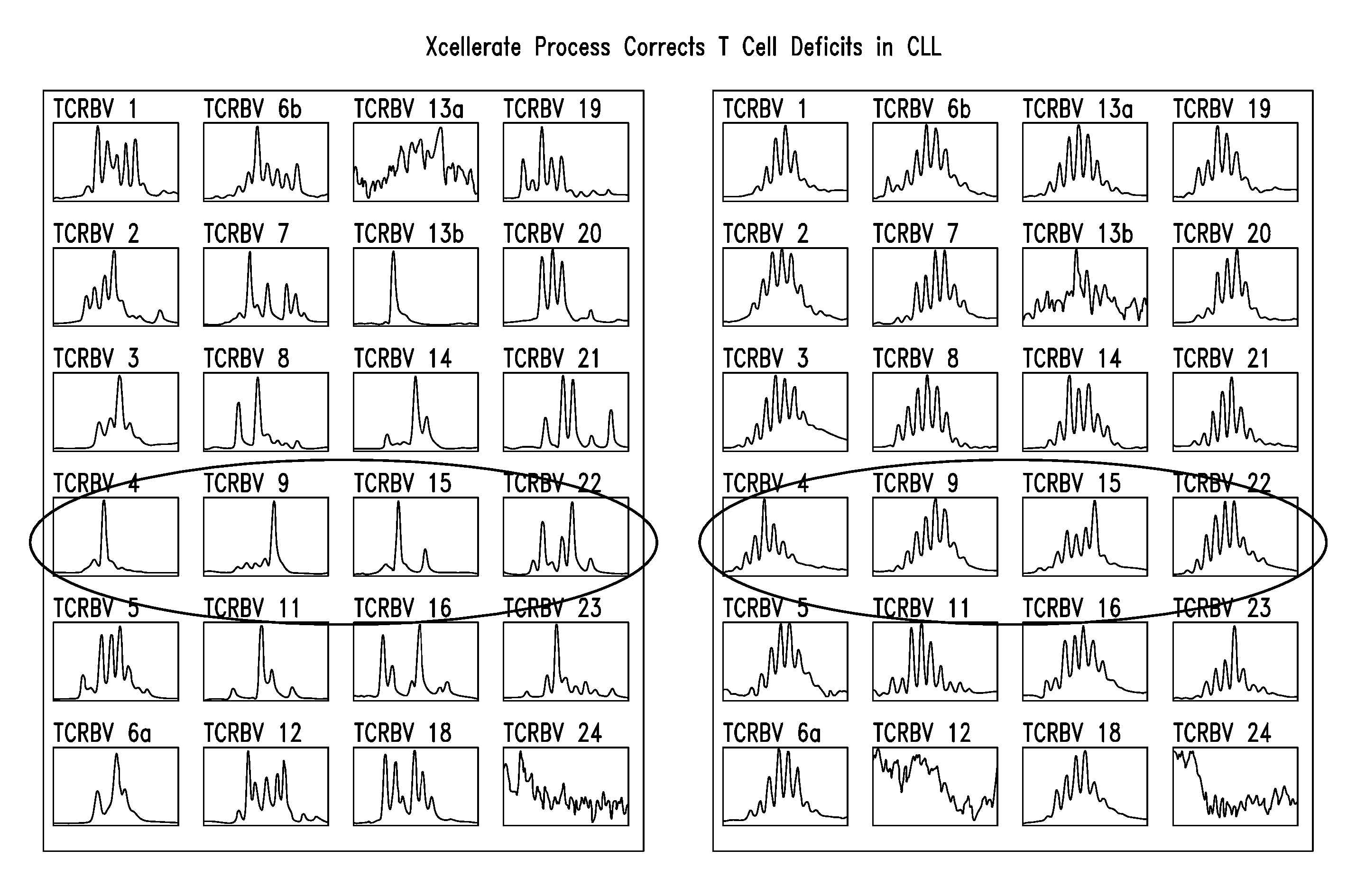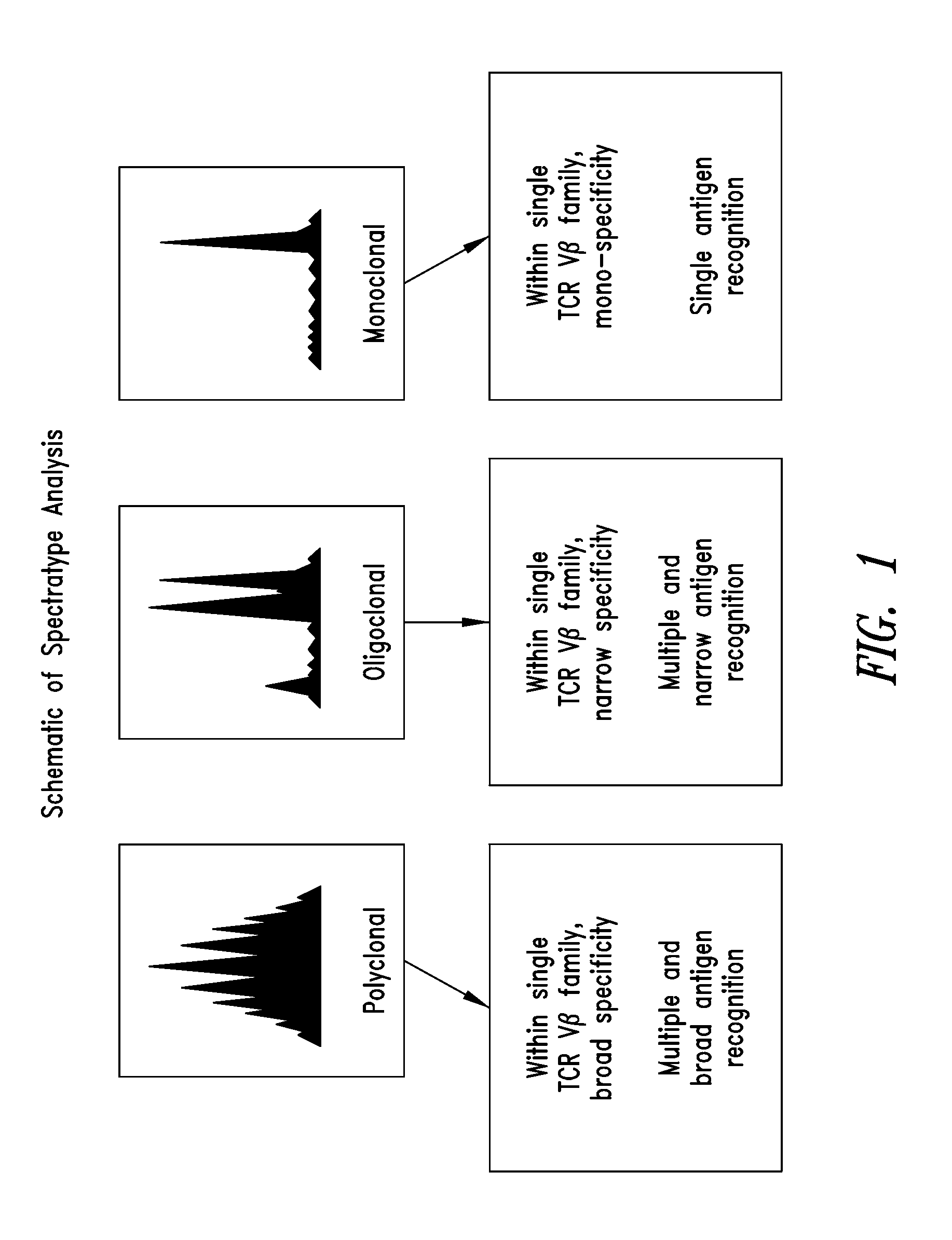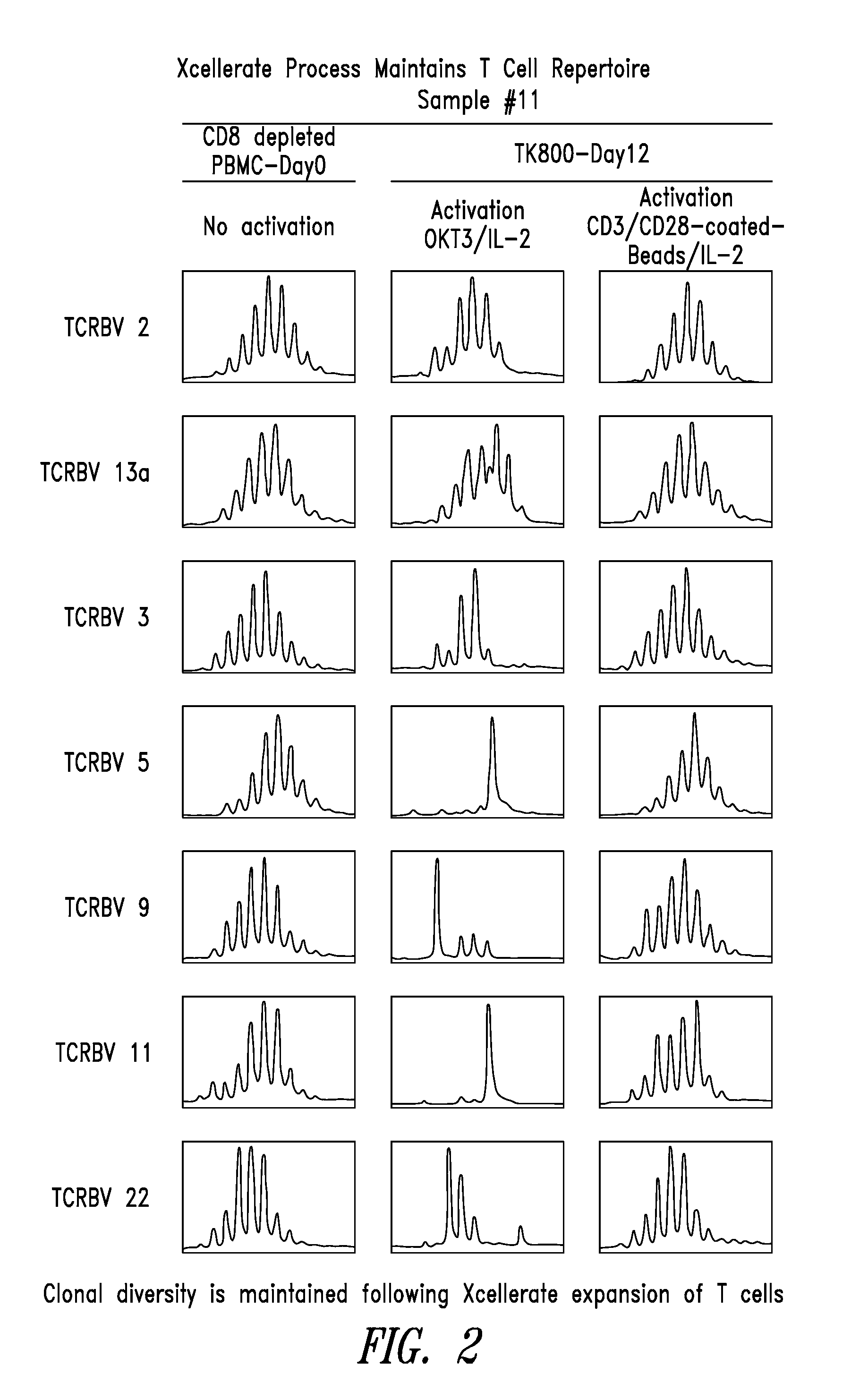Compositions and methods for restoring immune responsiveness in patients with immunological defects
- Summary
- Abstract
- Description
- Claims
- Application Information
AI Technical Summary
Benefits of technology
Problems solved by technology
Method used
Image
Examples
example 1
T Cell Stimulation
[0147] In certain experiments described herein, the process referred to as XCELLERATE I™ was utilized. In brief, in this process, the XCELLERATED T cells are manufactured from a peripheral blood mononuclear cell (PBMC) apheresis product. After collection from the patient at the clinical site, the PBMC apheresis are washed and then incubated with “uncoated” DYNABEADS® M-450 Epoxy. During this time phagocytic cells such as monocytes ingest the beads. After the incubation, the cells and beads are processed over a MaxSep Magnetic Separator in order to remove the beads and any monocytic / phagocytic cells that are attached to the beads. Following this monocyte-depletion step, a volume containing a total of 5×108 CD3+ T cells is taken and set-up with 1.5×109 DYNABEADS® M-450 CD3 / CD28 T Cell Expander to initiate the XCELLERATE® process (approx. 3:1 beads to T cells). The mixture of cells and DYNABEADS® M-450 CD3 / CD28 T Cell Expander are then incubated at 37° C., 5% CO2 for...
example 2
[0160] Spectratype Analysis of T Cells
[0161] This example describes the use of spectratype analysis to determine the clonality of the expressed TCRs in T cell populations before and after stimulation using the XCELLERATE™ method. Described herein is the analysis of rearranged Vβ genes. The skilled artisan will readily recognize that the Vα, Vγ, and Vδ TCR genes may be analyzed in a similar manner.
[0162] Spectratype analysis was carried out essentially as described in U.S. Pat. No. 5,837,447, and C. Ferrand, et al (C. Ferrand, E. Robinet, Emmanuel Contassot, J-M Certoux, Annick Lim, P. Herve, and P. Tiberghien. Human Gene Therapy 11: 1151-1164, 2000). Briefly, starting cell suspensions were from PBMCs, cell lines, PBMC depleted of CD8+ cells, and / or XCELLERATED T cells. Total RNA was isolated using Trizol (Gibco-BRL) and 2 ug were reverse transcribed with random hexamers (Pharmacia Biotech) in a standard cDNA synthesis reaction.
[0163] Each TCR BV segment was amplified with 1 of th...
example 3
Xcellerate Process Improves Lymphocyte Recovery in Transplanted Myeloma Patients
[0175] This example describes data from a preliminary clinical trial in a patient with multiple myeloma indicating that XCELLERATED T cells improve the recovery in transplanted myeloma patients.
[0176] The XCELLERATE II process was carried out essentially as described in Example 1 on leukapheresed cells collected from the patient following registration in the clinical trial and prior to stem cell collection. XCELLERATED T cells were infused on day +3 following stem cell infusion. As shown in FIG. 6, the XCELLERATE™ process improves lymphocyte recovery in a transplanted myeloma patient. Additionally, both CD4 and CD8 T cells increased after XCELLERATED T cell infusion.
[0177] Thus, this clinical data shows that XCELLERATED T cells improve the recovery in transplanted myeloma patients and support the notion that the T cell compositions described herein can be infused into donors to provide broad and poten...
PUM
| Property | Measurement | Unit |
|---|---|---|
| Time | aaaaa | aaaaa |
| Time | aaaaa | aaaaa |
| Time | aaaaa | aaaaa |
Abstract
Description
Claims
Application Information
 Login to View More
Login to View More - R&D
- Intellectual Property
- Life Sciences
- Materials
- Tech Scout
- Unparalleled Data Quality
- Higher Quality Content
- 60% Fewer Hallucinations
Browse by: Latest US Patents, China's latest patents, Technical Efficacy Thesaurus, Application Domain, Technology Topic, Popular Technical Reports.
© 2025 PatSnap. All rights reserved.Legal|Privacy policy|Modern Slavery Act Transparency Statement|Sitemap|About US| Contact US: help@patsnap.com



